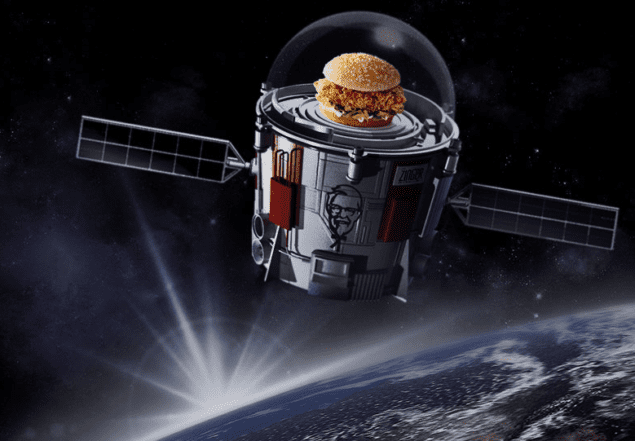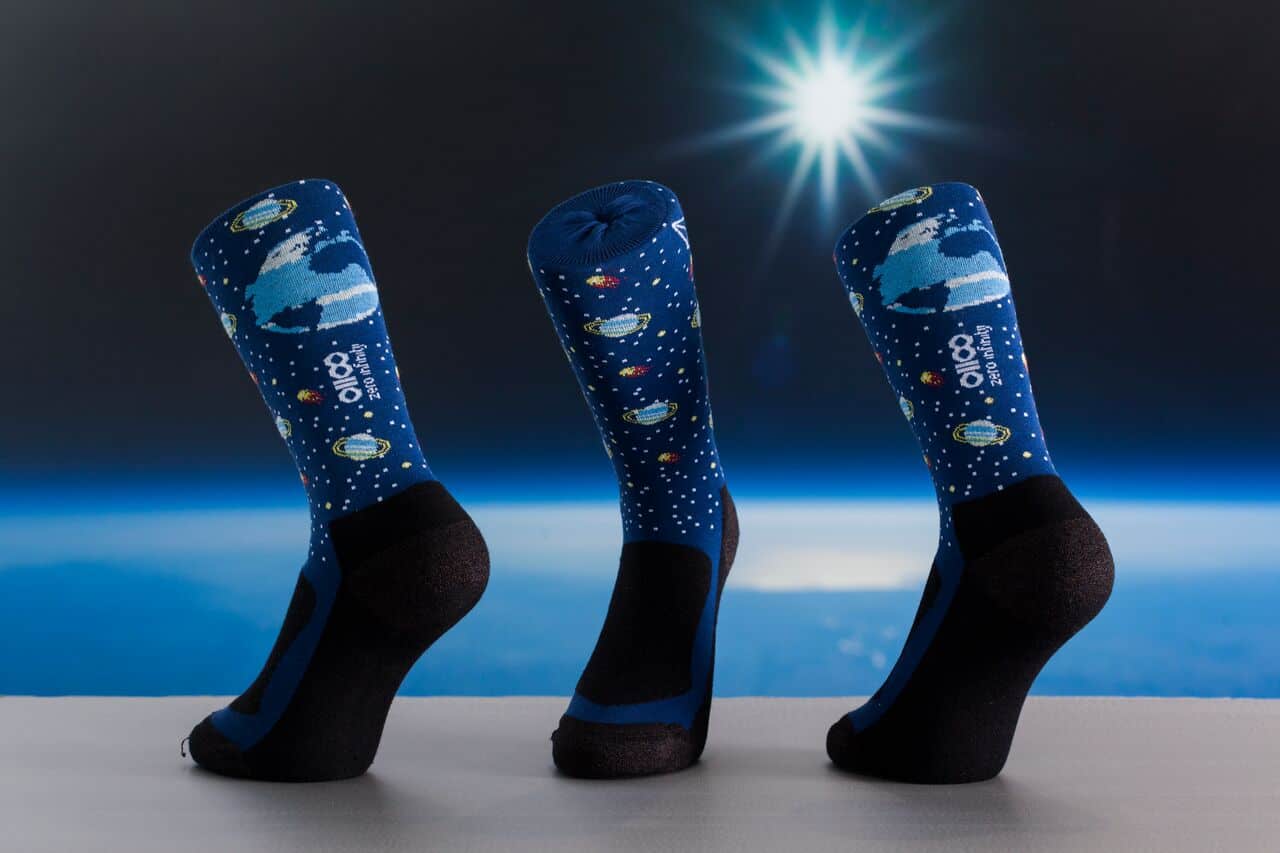
By Sarah Tesh and Hamish Johnston
If you could put anything on a high-altitude balloon, what would it be? World View Enterprises has opted for a spicy chicken sandwich. The company plans to run balloon excursions to the stratosphere and on 21 June it will make its debut voyage carrying a Zinger sandwich from Kentucky Fried Chicken (KFC) – but with no-one on board to eat it. According to the New York Times the flight is tied in with KFC’s current space-based advertising campaign and the sandwich will spend at least four days in the stratosphere. As well as planning to charge tourists $75,000 per person for a ride, World View Enterprises says that its balloons could also be used to create an early warning system for tornadoes.

When tourists do begin venturing into space, they won’t have to worry about having unfashionable socks. Why? Because Spanish company Sock’M has created SpaceSocks. Sock’M is a designer sock brand and was created after its founders got lost in the mountains and started dancing naked with creatures wearing knee-high socks (yes, that’s what they say). Hoping to help make space travel more accessible, Sock’M teamed up with Zero 2 Infinity to create socks scientifically designed to meet the challenges of space. The socks are made with fire-proof cotton and are reinforced with silver and copper thread to inhibit the electrostatic charging that occurs in synthetic fabric in zero gravity. As most of us are still grounded however, Sock’M has also made limited edition socks to fill our space fashion needs.
Moving from one meeting of science and fashion to another, a team at the University of California, Berkley, has concluded that dressmakers have impressive 3D, or “stereoscopic”, vision. This means their brains are particularly good at translating the 2D viewpoints of each eye into one 3D image, which is important for threading a needle, catching a ball or parking a car (based on these I would be an awful dressmaker). Published in Scientific Reports, the researchers showed that dressmakers are 80% more accurate than non-dressmakers at calculating the distance between themselves and the objects they’re looking at. They are also 43% better at guessing the distance between two objects. Whether dressmakers gain this needle-sharp vision with experience or are drawn into the profession because of it, remains a mystery.



